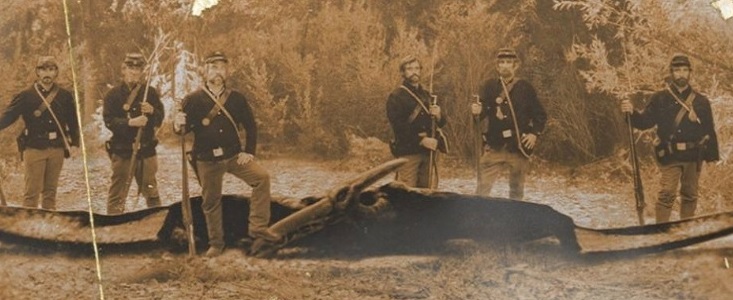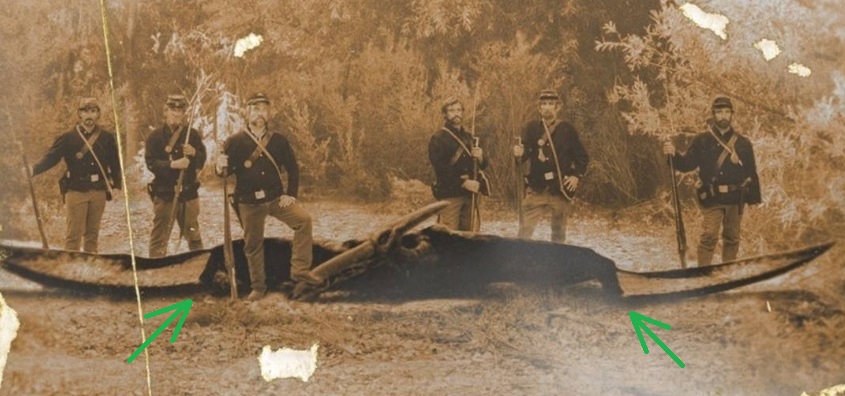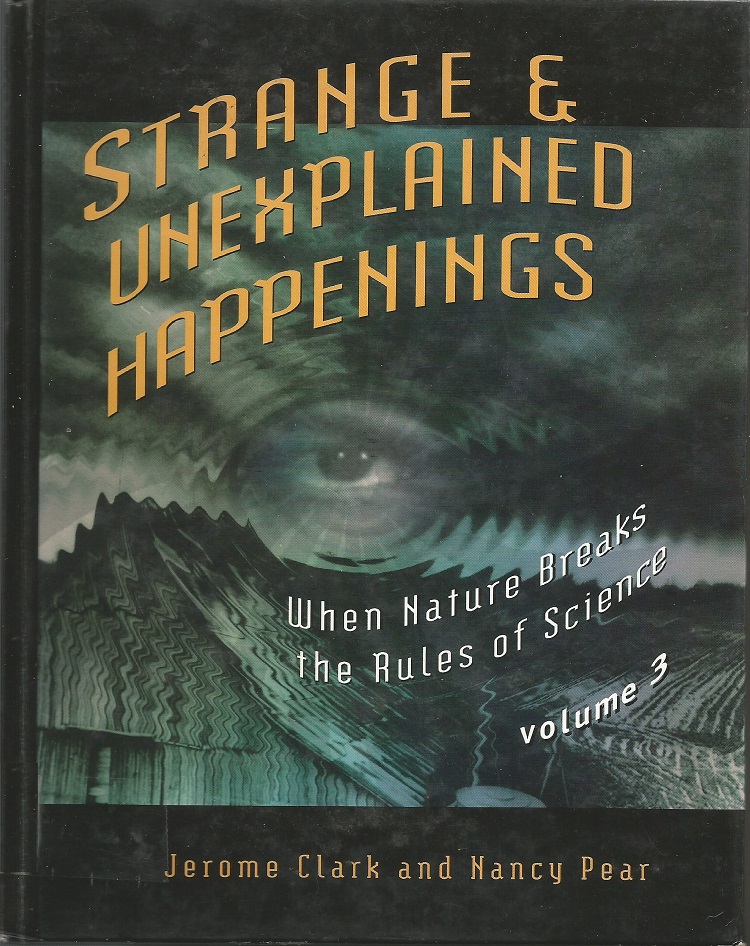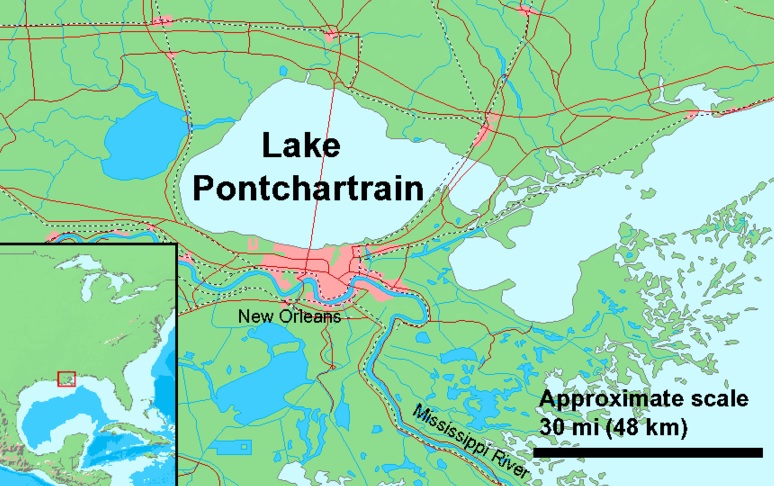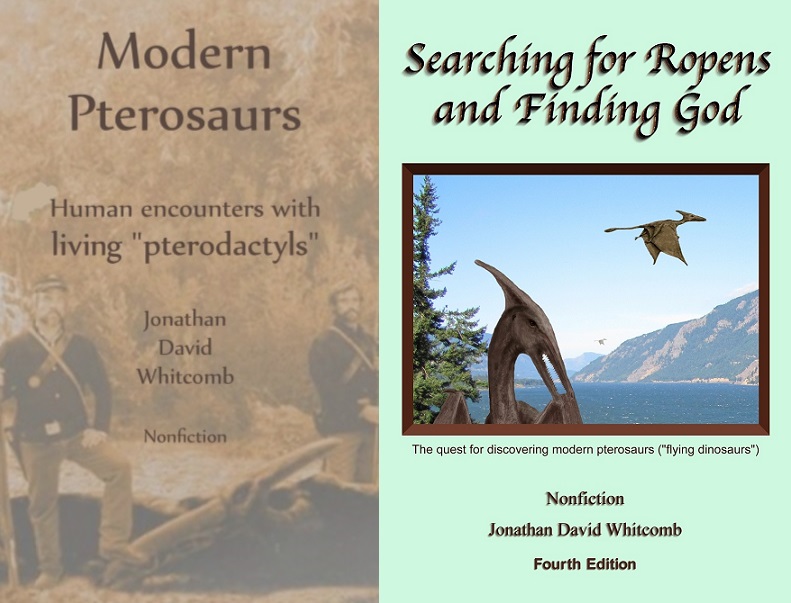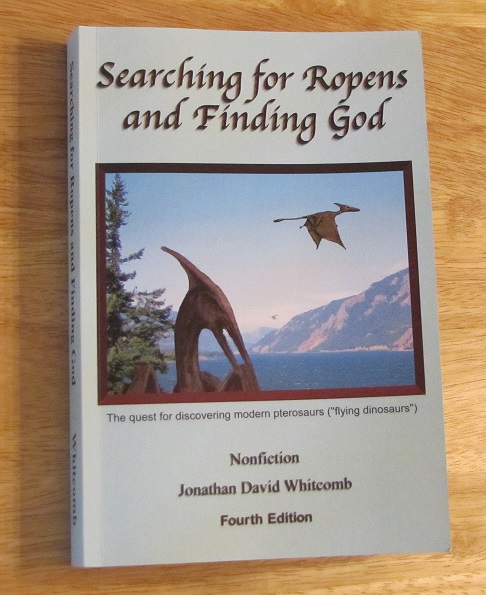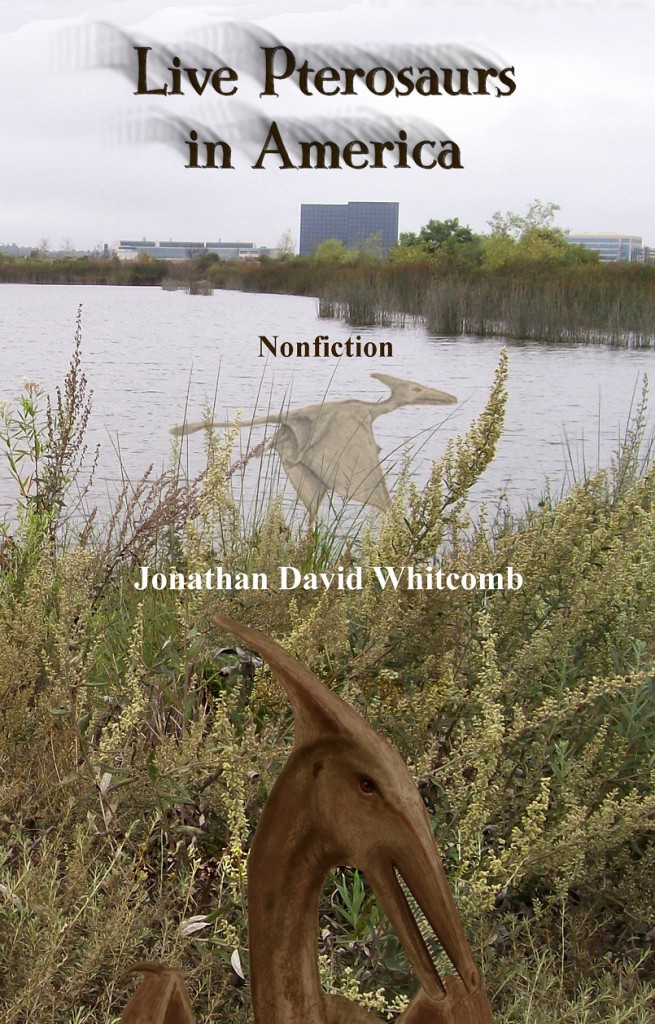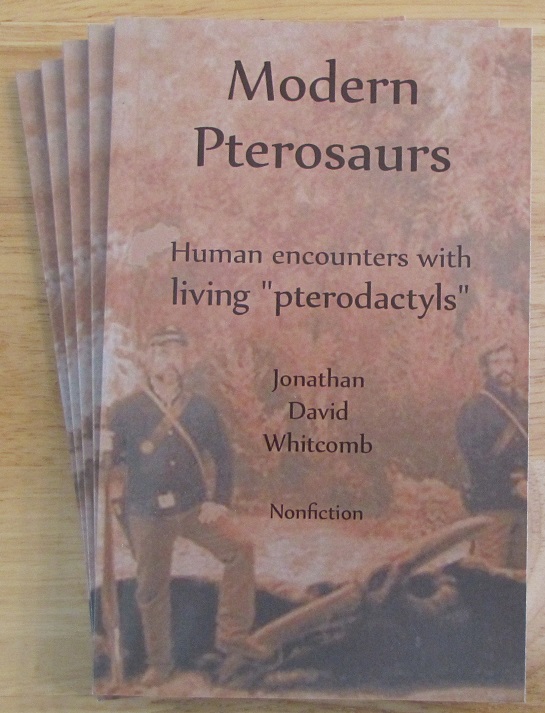By investigative journalist Jonathan Whitcomb
I have made a major shift in my position regarding the Ptp photo, which has what is sometimes called the “Civil War pterodactyl” or the “Civil War Pteranodon.” As of November 5, 2018, the following is my position regarding what appeared on the surface to be a nineteenth century photograph.
New Position on Ptp
After learning about a portion of an animation in one episode of the BBC TV series “Walking With Dinosaurs,” I decided to withdraw my support of the Ptp photograph as any significant evidence for the existence of modern living pterosaurs. I no longer maintain that this photograph is highly likely, at least in its entirety, to be from the nineteenth century.
Arrows show apparent connections of parts of wings in this photo: Ptp
.
State of the Book Modern Pterosaurs
All my other nonfiction cryptozoology books remain available and for sale from many sources, mostly online book sellers, but Modern Pterosaurs has just been ordered to have printings halted. Much of what it contains is still valid and valuable, eyewitness sightings in particular, yet a significant part of the content of this book is related to the Ptp photograph. That requires that I no longer promote that one book and I have ordered the publisher to stop printing it. Third party book sellers may have limited copies, but I do not recommend Modern Pterosaurs to readers.
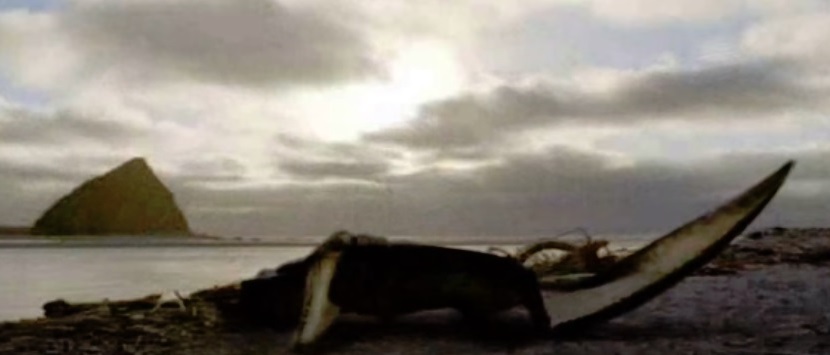
From “Walking With Dinosaurs” — note the wing shape on the right
Television Series Produced by BBC
One of the episodes of Walking With Dinosaurs (on the air around 1999) had a dying pterosaur featured. That animation shows an Ornithocheirus that is almost dead. The wing is much too close for comfort regarding Ptp.
Whatever the origin of materials for that animation and the apparent photo shown on a Freaky Links episode at about that time (around 1999 or 2000), I cannot maintain any support for the Ptp photograph.
I am saying nothing about the origin or origins of Ptp at this time. Whatever happened, we need to move on to other books and to support for eyewitnesses of these wonderful MODERN pterosaurs.
The Girl who saw a Flying Dinosaur
This nonfiction paperback for children and teenagers is just about to be published. I just need to look at a proof copy of this book before giving final approval for its publication. It will have no reference to Ptp.
###
.
. . . some of the nonfiction books are entirely about these featherless flying creatures and others include cryptids of other types . . .
.
The Girl who saw a Flying Dinosaur
After fifteen years of my investigation of sighting reports of apparent living pterosaurs worldwide, I feel perfectly confident in proclaiming that the flying creature seen by Patty Carson at Guantanamo Bay, Cuba, was a modern Rhamphorhynchoid pterosaur, what some people call a ropen.
.
Photo of a modern pterosaur (still from a video, actually)
Last week, I found a Youtube documentary on an expedition on New Britain Island, Papua New Guinea, in which two Americans, Milt Marcy and Peter Beach, were searching for a living pterosaur.
.
Books on non-extinct pterosaurs
The nonfiction paperback Live Pterosaurs in America
.
Credibility of pterosaur eyewitnesses
Many natives living on the tropical island of Umboi (Siasi), Papua New Guinea, have seen the flying light, the bioluminescent glow of the ropen.
.
A book about living pterosaurs (actually several books)
- Searching for Ropens and Finding God
- Bird From Hell
- Live Pterosaurs in America
- etc



